Play
Pause
April 20, 2023 – New York City. A first of its kind fashion show lit up the night from SoHo’s House of Cannabis.
Befitting the date, the host was none other than the Korean-American ‘smokewear’ label Sundae School in its debut runway showcase named “Let There Be Light.”
For the unfamiliar, Sundae School’s niche is creating streetwear pieces meant to amplify the cannabis consumption experience, with a focus on comfortable pieces, distinctive patterns and utilitarian designs.
The concept it birthed is an approach to building a cannabis brand using a two-pronged approach to sell plant products alongside an associated fashion line where each half supports the other’s growth.
The looks in the “Let there Be Light” collection reimagine the spectrum of stoners through an homage to the many avenues of life in the city, and presents a more diverse image of what a cannabis consumer looks like.
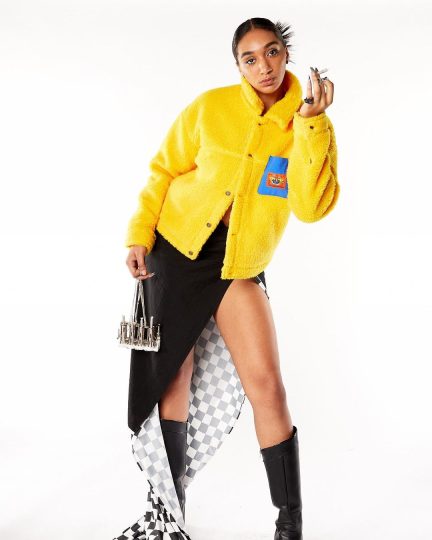
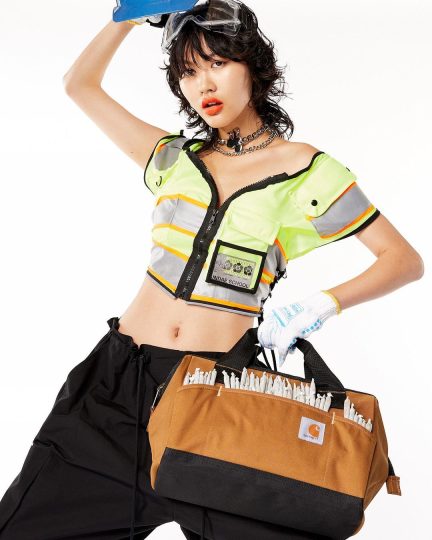
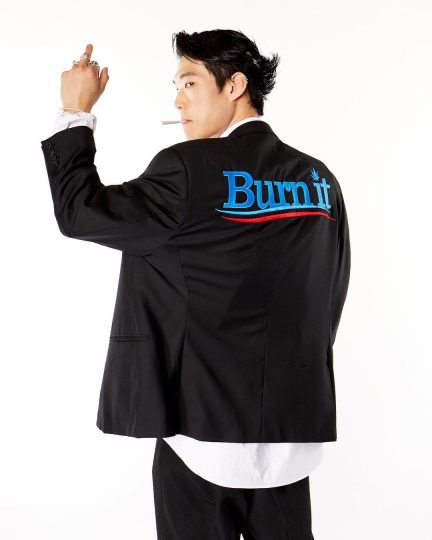
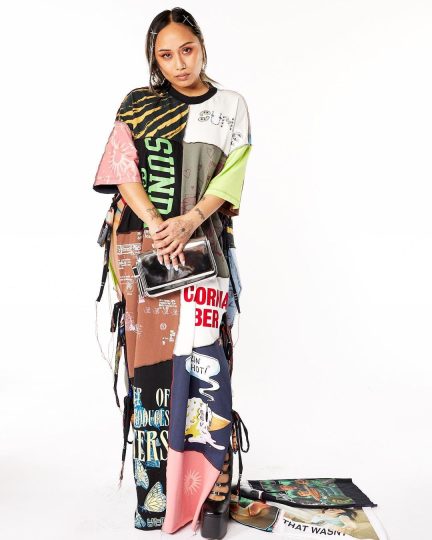
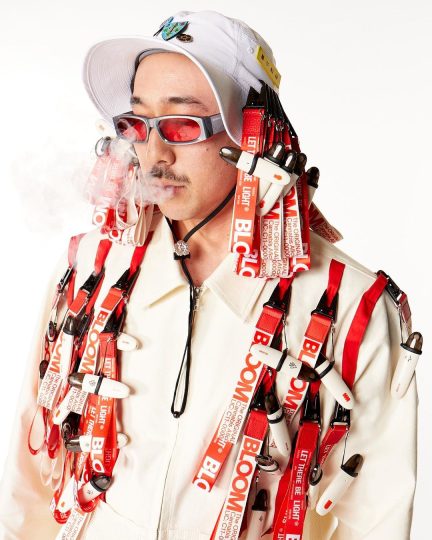
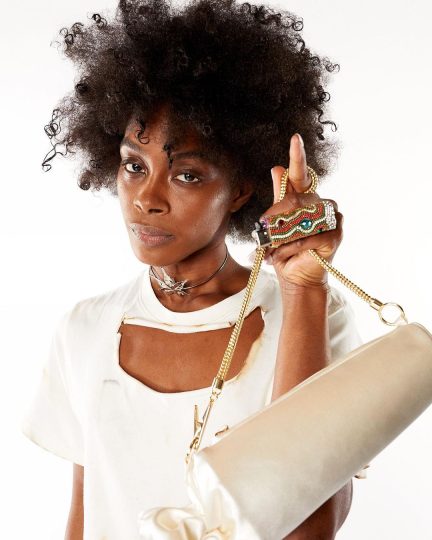
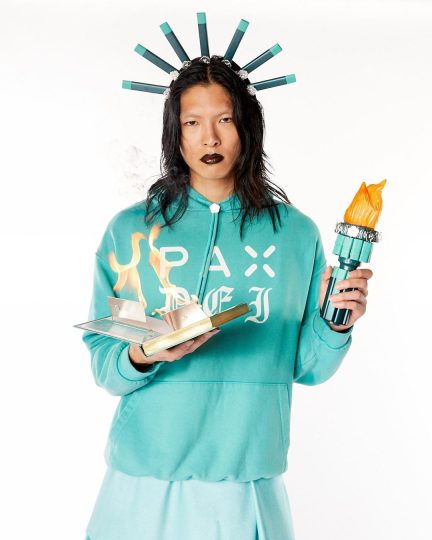
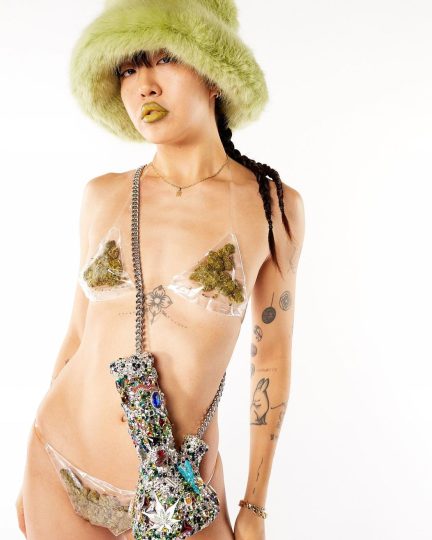
“All of this subversion is what we aspire to explore. Not for the sake of controversy, but for the sake of an elevated experience with cannabis—elevated not just physically, but in terms of a higher form of education, too.”
-Sundae School Founder Dae Lim to Vogue
The “Let There Be Light” showcase captures a unique moment in time for the cannabis industry. On New York’s first legal celebration of the official-unofficial international day of cannabis.
[EXPLAIN.]
On a wider level, these types of frustrations and setbacks seem to be the one unifying factor in legal cannabis markets nationwide.
Although dedicated fashion-cannabis industry crossovers are still in their early days, what lessons can be learned from some of the early adopters and trailblazers facilitating the marriage between these two industries?
Nadir Pearson is a brand strategy and business development specialist in the cannabis industry. He is the East Coast project lead for Cannaclusive, a consulting group meant to develop new brands and ensure fairer representation in the industry. He is also a co-founder of Hybrid, a cannabis e-commerce platform – currently in development – seeking to resolve some of the challenges cannabis brands face trying to promote their goods on traditional platforms. Knowing how to navigate social media platforms’ fickle standards can be the difference between success and failure for an up-and-coming brand. Pearson believes that marketing is part of what makes this embrace between fashion and cannabis “inherent.” When social media is so complicated for an aspiring cannabis brand, clothing presents a path forwards with significantly less risk than relying on flower products to build a brand. Fashion is a visual-driven medium and is highly shareable both online and in-person. Most major platforms, including Instagram, Twitter, YouTube and TikTok all prohibit cannabis products from being sold, and limit promotion to varying extents: be it age restrictions, restricting accounts or banning depictions of consumption. “If you have the most liberal or free to the left, Instagram is in the middle, and TikTok is to the far right,” Pearson noted, widely gesturing out his hands.
A lot of this is simply by nature – fashion is a visual-driven medium and is shareable both online and in-person. When marketing on social media is so complicated for an aspiring cannabis brand, clothing presents a path forwards with significantly less risk than relying on flower products to build a brand.
Getting a post taken down is just one of many triggers that can cause a cannabis brand to be shadowbanned for a given time. Others include depicting consumption, linking to sales platforms, insufficient age verification and more, depending on the platform. This is a risk
“They were all together at one time, even if people didn’t approve of it. You see the genesis of it, as those industries have flourished with people who are now effectively the trendsetters”
– Pearson said.
for discoverability: it shows up on fewer feeds, takes more keywords to search, detaches hashtags, and worst, platforms can do this without ever informing the user. For the inexperienced, that landscape might as well be a minefield. That’s where clothing comes in clutch. Fashion products offer a solution for cannabis brands seeking more control over their social media presence and spread. Beyond that, Pearson says this open embrace of ‘kush couture’ represents the culmination of a rich history of cannabis and streetwear cultures uplifting one another in a shared struggle against authorities seeking to and delegitimize them.
DO NOT promote any illegal sessions, activities or sale of cannabis.
Sundae School’s approach to combining cannabis and fashion has helped it develop a brand voice that has thrived across social media platforms. Today, it boasts 116,000 followers on Instagram and 88,000 on TikTok under the handle @sundae.school on both.
“It actually has opened up a lot more creativity on the cannabis side because they’re able to express themselves through what they wear and not just what cannabis products that they use,” said Naomi Chi, Sundae School’s head of growth marketing. Taking a playful community-oriented approach, it’s not uncommon to see content like ASMR edible unboxings, reposting people and their dogs sporting matching Sundae School fleeces, joint rolling tutorials, Korean slang guides, and even just straight up asking their followers to help choose between potential designs. “Any new releases that we have, we try to take a more educational angle because we know that that does well, but even then, we get flagged or we’ll get shadow banned often. So yeah, it’s been difficult, but I think what it did for us was to push us to be more creative, you know, be more innovative,” Chi added.
In the face of difficult standards on social media, Sundae School’s consistency to its brand voice has enabled it to gain the presence it has now: it feels much more like a team of creators than just a digital storefront. It prioritizes creativity, inclusivity, and individuality with a: “let the product speak for itself” ethos. All of those elements contribute towards the idea of smokewear brands like Sundae School providing a way for their customers to incorporate their brand affiliation into their daily lives, beyond what they choose to smoke.
Listen to Naomi talk about crafting Sundae School’s voice.

주제 파악 – Know Thyself
라이터 흠치기 금지 –Thou shalt not steal
lighters
아는것이 힘이다 – Knowledge is Power
길빵금지 – The World Is Not Your
Ashtray
향기를 맡아라- Stop and Smell the
Flowers
살생유택 – Thou Shalt Not Kill Unless
They Are Mosquitos
리그 – Honor Your Father and
Mother.
일요일 휴식 – Remember to Keep Holy
the Sabbath Day
착하게 살아라 – Thou Shalt not Exude
Negative Vibrations
환언적 사상 금지 – Thou Shalt not be
Reductive
Communal Cowboy is an Austin-based CBD and western-wear brand first envisioned in 2019. Despite the fact that its primary goods are federally legal hemp products, founder Justin Dumbeck explained how developing an identity in fashion helped circumvent some of the major challenges of running a cannabis business from Texas. In mid-2020, Texas had proposed a ban on smokable hemp altogether. Communal Cowboy was on the verge of moving its cannabis operations to Los Angeles, and Dumbeck was finding it “virtually impossible” to advertise on social media. Over the course of six months, Communal Cowboy’s team gathered designs, created a website and started taking photoshoots for its first ‘Get Lost’ collection.
“It’s a very good feeling. It’s also a double edged sword because it’s almost as if I’m running two separate companies.”
– Dumbeck said.
By the end of 2020, “It took off, started making just as much money or more than the hemp products” Dumbeck said. Because of this rapid growth, Communal Cowboy heavily focused on developing the clothing side of the brand. The following, Dumbeck focuses on learning the ins-and outs of garment productions such as manufacturers, designs, materials and logistics. “It’s a very good feeling. It’s also a double edged sword because it’s almost as if I’m running two separate companies.” That pressure of understanding two very different business worlds demands flexibility and optimization; precisely why Dumbeck’s priority for 2023 is focusing on the marriage between both sides in the purpose of merging his customer bases.
Listen to how cannabis can enhance the way clothes are engineered.
That future will be defined by the innovators who are creating products that demonstrate an untapped utility in designing smokewear. That can present itself in a number of ways – both Sundae School and Communal Cowboy express that utility through design.
Because the demand for new designs needed for herbal products is relatively low, the company could put more emphasis on keeping fresh designs that appeal to the Texas demographic.
Dumbeck accomplishes this with a conscious air of subtlety. That includes elements such, or smoking cowboys evoking the ever-classic Marlboro Man, but drawn with nods to psychedelic art styles.
“I think if it’s overly heavy, it’s going to turn a lot of people off. You know, I can I can sell a t-shirt to a super stoner. I can sell the t-shirt to a 45 year old who grew up in the Ronald Reagan era. You know, I think normalizing cannabis is another reason why we wanted to do that.”
Design can extend beyond prints and patterns. Specifically, as these cannabis fashion brands have begun to experiment with the physical garments themselves. For example, Communal Cowboy sells tote bags made out of hemp fibers – which use dramatically less water than cotton.
Earlier this year, Sundae School released its 2023 basics collection which offers wardrobe essentials like plain color sweats, tank tops, and boxers with built-in features meant to appeal to smokers, such as convenient stash pockets and adjustable sleeves.
“Not to say that we, like, invented this niche thing or like we’ve created this avenue, but I think it’s just really cool to see other brands that are also not thinking outside the box.”
– Chi said.
Having a dedicated focus on product function helps smokewear brands stand out from traditional fashion labels as well as merchandise made by other cannabis companies. Moreover, it captures the essence of the niche: they’re the only ones with the foresight to make these design choices and access to the markets that would get the most utility from them.
When it comes to fashion collaborations, cannabis brands have not been a stranger to those with deep wallets. Because these smokewear labels and collaborations are such novel concepts, it means that factors such as production costs, regulatory complexity, design and still-niche consumer base all contribute to high prices for these goods. There are cannabis consumers with resources to invest towards their lifestyle and achieving a specific experience. Prior to widespread legalization, the concept of high-end goods in this space was simply infeasible by nature. Today, the concept of luxury cannabis manifests itself across a spectrum: it can include carefully manicured strains, infused wellness products, artisan paraphernalia, carefully filtered THC concentrates, and, well –of course– fashion accessories.
Potent Goods is a cannabis lifestyle brand founded in 2021 that emphasizes on presenting a “sensual and luxurious” consumption experience. However, Potent Goods’ approach differentiates itself from other smokewear brands from having a strong fashion legacy behind it, as well as and goal of curating its own world of consumption experiences. A large part of that curation comes through mother-son founders Gela Nash-Taylor and Travis Nash’s ability to Illustrate a stylish and refined approach to being a social smoker. Nash-Taylor, founder of Juicy Couture, has a legacy in streetwear that set a new standard for combining comfort and style. The knowledge that comes from a
“A lot of Gela’s teachings that she learned from launching and running Juicy still hold true. “Product is King” is something we hear a lot.”
– Drain said.
brand with that staying power is immense. “[Gela’s] expertise in business and branding is insane, I learn so much from her every day and am so incredibly lucky to work alongside her,” said Devin Drain, Potent Goods’ director of marketing. Having that foundation in the fashion world gives Potent goods the advantage of experience when it comes to designing and producing clothes, where its experimentation is primarily from its approach to incorporating cannabis into that formula. On first impression, that experience is apparent: Potent Goods’ marketing is very intentional in portraying its consumption experience as ‘luxurious and sensual’- in fact, it’s one of its mottos.
Potent Goods’ approach splits its product into three primary product lines: Amplify, Muse, and Offline. These are Potent Goods’ sativa, hybrid and indica strains respectively. The respective packaging has distinct patterns to evoke its vision of muted luxury.
They offer apparel that matches those strain families, to make one’s consumption preferences something they can express as an aesthetic. Windbreakers, crossbody bags, masks, and track pants, all of which are meant to evoke the same luxury direction of the cannabis.
Drain noted, “I personally love wearing our Offline and Noir prints that feature cannabis plants in the print, it’s a fun nod to the industry I love being a part of and oddly gives me a sense of pride.”
Behind the scenes at a Potent Goods shoot
Julianna Montanno
Another element of Potent Goods’ curation is that it bucks the industry’s trend of emphasizing that the quality of a given strain is tied to how powerful it is. While that might be what a seasoned smoker seeks, it’s not an inviting experience for new consumers.
Both Potent Goods and Communal Cowboy have identified this as an issue they hope to alleviate. By focusing on a more refined experience, both Potent Goods and Communal Cowboy appeal to a wider range of consumers who are looking for a more nuanced and sophisticated approach to cannabis culture. Justin Dumbeck describes this through Communal Cowboy’s philosophy of ‘Ritualistic Relaxation,’ which puts an emphasis in gaining calm & clarity from his company’s products.
The evolution of streetwear and cannabis from the informal to the formal economy have been marked by a shift in perception. The people and cultures that were once considered subversive and counterculture have now filled the role of tastemakers, with the weight of established industry seeking to tap into their economic potential.
Streetwear’s evolution into the fashion mainstream explains it like no other. In the early 1980s, streetwear pioneers emerged from a mix of hip-hop, skate and punk subcultures. All of them depicted drugs into their artistic expression to challenge the dominant narrative that they were criminals and deviants.
Many elements of today’s trends came directly from these movements. The foundations of streetwear largely informs today’s tastes that are largely taken for granted. Sneaker culture, athleisure, graphic tees, oversized silhouettes, are just a few aspects of today’s fashion that were birthed from streetwear subcultures.
Iconic brands such as Stüssy were born out of grassroots demand; They made clothing by hand and sold them at local stores or through their own networks of creatives. This approach gave streetwear a sense of authenticity and exclusivity that was hard to replicate by larger, mainstream brands.
The War on Drugs further perpetuated racist and classist stereotypes, painting inner city youth as needing punishment rather than treatment. Essentially, the DIY nature of early streetwear led to further marginalization, leading to innovation contained with sub communities that were not taken seriously, or even demonized in its time. Now, mainstream culture which has now adopted both without necessarily giving credit to the original innovators.
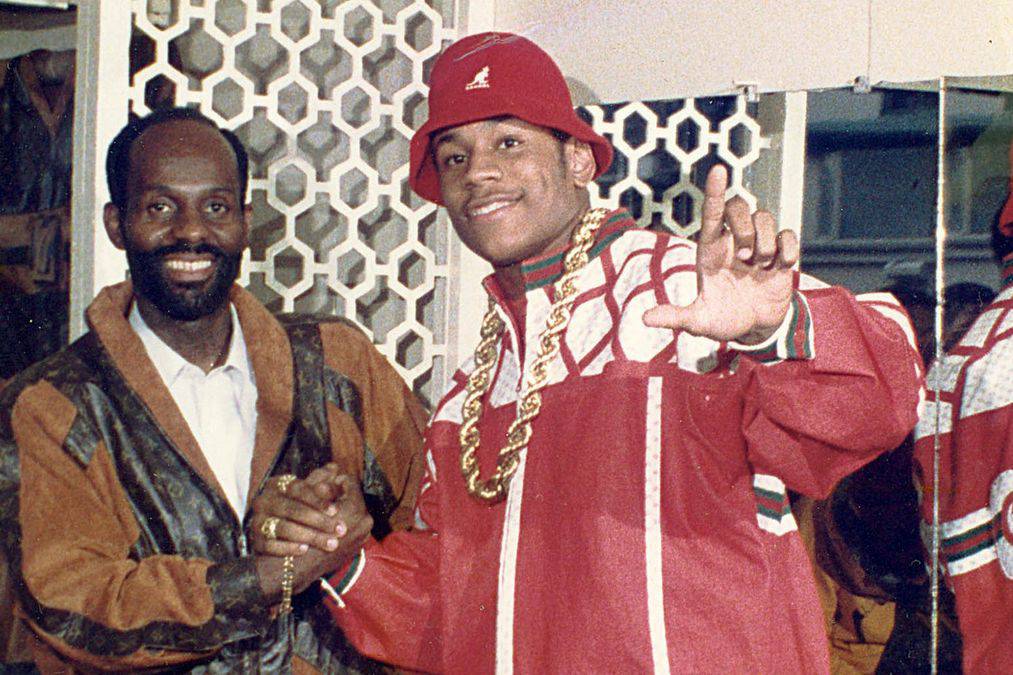
After being shut out by fashion houses, Dapper Dan invented techniques such as screen printing on leather, and designing fabrics for his elegant "knock-ups." They used flashy high-end logos in streetwear styles. These pieces defined the look of early hip-hop icons such as LL Cool J, who Dan first styled in 1985.

Reagan passed the Anti-Drug Law of 1986, one of the most creating new mandatory minimum sentencing standards for drugs, and tailoring towards punishment over rehabilitation.

In 1992, a copyright lawsuit led by Fendi and US Attorney Sonia Sotamayor for one of Dapper Dan's "knock-up" jacket Mike Tyson was photographed wearing. His boutique was shut down and he was blackballed from the industry.

California voters pass Proposition 215: the Compassionate Use Act of 1996 with 56% of the vote. It legalized possession, growth and use for paitients with a variety of long-term illnesses.
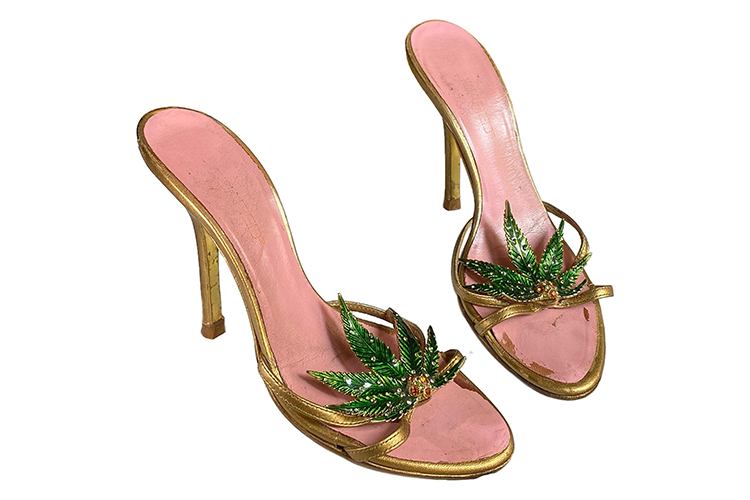
Inspired by Paris Hilton, Dsquared's Spring/Summer 2005 collection played with contrast, using the weed leaf to challenge notions of lowbrow/highbrow expression in fashion.

57% of California voters approved Proposition 64, which legalized recreational cannabis use for all residents over the age of 21. It opened what is now the country's largest legal market. Maine, Massachusetts and Nevada passed recreational legalization that same year.
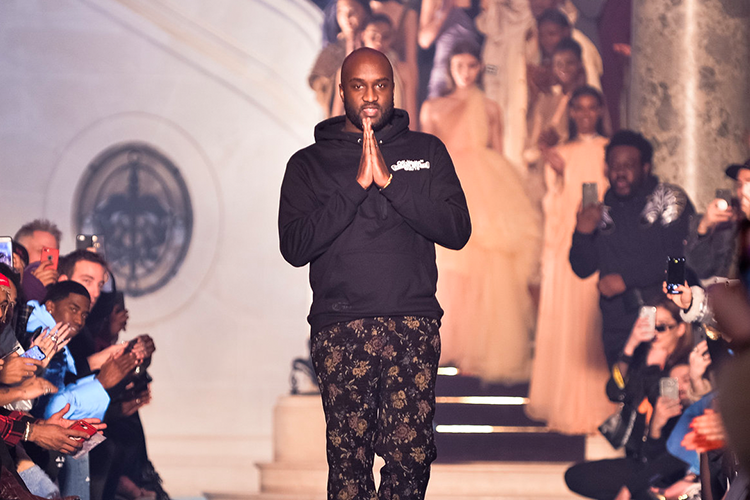
Abloh, founder of OFF-WHITE, an industrial-inspired streetwear label was named the creative director for Louis Vuitton's men's lines. He was the first Black man to achieve a directorial role at a fashion house of that level.

In the 2020 election, four states all passed ballot measures to legalize cannabis for recreational use: Arizona, Montana, South Dakota and New Jersey.

Rapper and Hip-Hop mogul Jay-Z announced the launch of Monogram, his sleek high-end cannabis line, as part of a larger investment in cannabis products and individual companies.
Despite the political undertones of cannabis advocacy, the plant is now widely acceptable in the realm of high fashion. It was no longer just a symbol of counterculture, but overshadowed as a mainstream symbol of style, youthful rebellion and self-expression.
By the early 2000s, products such as HUF’s iconic “plantlife” leaf-print socks helped shift the plant’s image towards being more of an ‘easter egg’ of sorts. In the following decade, a new wave of stoner-adjacent aesthetics began to seep into the fashion industry’s upper echelons as streetwear pioneers like Virgil Abloh began to recieve their flowers from the luxury sphere.
The once-controversial symbolism of cannabis, was now being presented by some of the most prominent names in fashion, including Alexander Wang, Mara Hoffman, and Demna Gvasalia. Cannabis motifs were showcased with the same casual ease as the florals on a Hawaiian shirt.
The shift was significant, as it highlighted the growing acceptance of cannabis in popular culture and signaled the plant’s emergence as a desirable commodity.
It is essential to note that this change didn’t occur in a vacuum. Legal cannabis steadily grew into a multi-billion-dollar industry, with major capital jockeying for position and striving to capture their piece of the pie. As it continues to move into the mainstream, it is clear that the once-feared plant has firmly established itself in the cultures of both fashion and commerce.
The act of embracing cannabis as a luxury product could be perceived as compromising its authenticity. The plant’s origins in counterculture, with its rebellious, anti-establishment connotations being at odds with the polished, upscale image of high couture.
If normalization is the goal, then is streetwear being cannabis’ foray into luxury sectors such a bad thing?
Working with Cannaclusive, Nadir Pearson has observed that attempts at high-end collaborations, endorsements and merchandising tend to favor those that can demonstrate their authenticity.
“When you think about these celebrity brands, they don’t have uber success, but the ones with that streetwear background have been the most successful,” he said.
Following the direction from Sundae School’s 4/20 show, New York will be the market to keep an eye on. Pearson added: “It’s only as effective as the marketers and brands around it. You didn’t have Seth Rogen coming out with different luxury items before. It was a bong or something that you had to keep in a drawer.”
However, it is important to recognize that the answer to this question is not straightforward, and there are both positive and negative outcomes to consider.
On one hand, creating a high-end consumer cannabis culture has the potential to increase its acceptance and reduce the stigma associated with it. By elevating the plant to the level of high fashion, it could become more accessible to broader markets and offer experiences that defy tired stereotypes and misconceptions.
On the other hand, there is also a risk that by commodifying cannabis, the sociopolitical issues around the plant could be further eroded. There is a concern that repurposing cannabis within high fashion could dilute the sociopolitical context the plant exists within, leaving it vulnerable to co-option by inauthentic actors looking for the next hot trend to ride or slap a logo on top of. Cannabis has a complicated history of prohibition, where countless people who worked to build the culture and knowledge around this plant remain incarcerated to this day. That reality must be reckoned with as the cannabis industry grows into a powerful economic force.